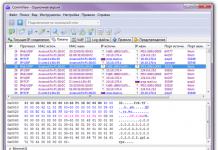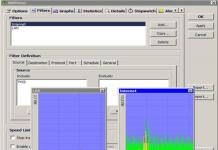Below we publish the material: Malfunctions of Sony cameras, causes and methods of troubleshooting according to which users often lose.
From the material we excluded items that were particularly “stupid”, in our opinion, for example: Malfunction - the indicator in the camera does not show battery charging. Cause: The charger plug is not connected to the AC outlet. The troubleshooting method is to connect the charger plug to a power outlet, etc.
You can reduce the risk of your camera falling by using a neck strap and always slide it over your head when you pick up the camera. You can't attach a strap to most lenses, but you can reduce the risk of any damage by holding the lens close to a flat surface when you attach or remove it. Then, if the lens slips from your grip, it won't fall far. Outdoors, you may have to crouch or kneel to keep the camera close to the ground when you attach or remove the lens.
If the worst happens and your lens goes into free fall, the risk of damage can be reduced if it is equipped with a lens hood. The hood protrudes from the front of the lens and can cause the brunt of the impact. Lens caps provide some degree of protection for your valuable lenses while you shoot—and reduce the risk of flash.
We also translated the instructions properly.
| Malfunction | Cause of malfunction | Troubleshooting method |
| Battery won't charge | The battery is not installed correctly | Carefully install the battery according to the camera's operating instructions. |
| CHG LED blinks while battery is charging | 1. Battery malfunction 2. Battery is discharged to 0 Volts |
1. Install a known good battery 2. The charging control system of most modern cameras perceives deeply discharged batteries as faulty. In some cases, the performance of such batteries is restored. In our workshop you can Free battery test your camera and, if possible, restore its functionality. Get advice from a specialist and, if necessary, submit to Besides protection, there's a good argument for wearing the right hood at all times - it can help reduce the risk of flare from the sun or other bright lights in front of the camera. This works very well for your lens when it's mounted on the camera, but it's equally at risk when it's off the camera, even if it's stored in a case or bag. The most secure way to store your lens is with the right hard case or bag. It can then be placed inside a bag or case. However, there are a number of packages available, and one of them is an inexpensive, lightweight lens protector. If you don't have a case or case, a cheap but effective way to protect your lens is to wrap it in a clean, tacky rag. This will reduce the risk of scratches and dents if the lens rolls off in the body and hits another lens or camera body. |
| The remaining battery charge indicator is incorrect, or the indicator shows sufficient charge, but the power soon runs out and the camera turns off | 1. The remaining charge time is not determined accurately. 3. Battery contacts are dirty |
1. Completely discharge and then charge the battery so that the battery charging control system in the camera functions correctly 2. One of the possible reasons when the battery charges quickly and discharges just as quickly is its malfunction. Install a new battery. 3. Clean the battery contacts with a cotton swab, etc., and charge it. |
| The camera does not turn on | 1. The battery is not installed correctly. 2. Battery malfunction 3. Battery is low |
1. In some Sony camera models, the battery may not be installed correctly. Install the battery according to the camera's operating instructions. 2. Install a known-good battery or contact a camera repair shop (see above) 3. Charge the battery. |
| The camera's power turns off at certain intervals | If you do not perform any actions with the camera while powered from a battery, for about 3 minutes. The camera will automatically turn off to prevent battery drain | Turn on the camera again. Power saving mode is not a malfunction of the camera. |
| The LCD display does not turn on when the camera is turned on. | The display backlight is turned off by the “display” button; on some models of Sony cameras, the button is indicated by the symbol || (see instructions). | Turn on the display backlight by pressing the button indicated in the operating instructions. |
| Image is out of focus | 1. The object is too close. 2. When shooting still images, the menu option is set to Magnifying glass mode or Twilight mode or Landscape mode or Fireworks mode 3. Pre-focus function selected |
1. Use the close-up (macro) function and set the lens position further from the subject than the minimum shooting distance provided by your camera model. Or install the "magnifying glass" option (if provided). 2. Set the option to a different position. 3. Cancel the function. Note: Many gadget and camera bags allow you to move sections to provide neat, padded compartments for each piece of equipment. This is a good alternative to a lens barrel or bag. A coat or jacket pocket can also be a surprisingly safe place for a lens. There will be a cocoon of lenses in the pocket of a deep coat. Whatever method you use to protect your lens, make sure you always install front and rear lens caps. If you're traveling by car, the worst place for your camera is on the floor in front of the passenger seat. This is where the equipment will be subject to all the engine vibrations and shocks as you move around the bumps. Although lenses are surprisingly durable, components can become loose or move around. |
| Optical zoom (zoom in - zoom out, or you can also call it zoom) does not work. | When shooting stationary objects, the “magnifying glass” (magnifying glass) function is selected in the menu | Set another function. |
| The image looks too dark | You are shooting a subject with a bright light source behind it. | |
| The image looks too bright | You are shooting a brightly lit subject against a dark background, such as a stage. | Adjust exposure (see instructions) |
| Your camera cannot write an image to the memory card | 1. Memory card is full 2. You are using a memory stick Duo with the write-protect switch set to the LOCK position. 3. |
1. Delete unnecessary pictures 2. Some types of memory cards may have LOCK switches installed to prevent the loss of important pictures; if the switch is set to the LOCK position, then such a memory card cannot be accidentally formatted, erased (delete) an image, or written to data (image). 3. Install a working memory card |
| 1. The operating mode switch is not set to the “photo” position 2. Flash mode is set to “no flash” (crossed out lightning icon) 3. The photo mode in the menu is set to twilight mode or fireworks mode 4. Selected Magnifying Glass Mode or Landscape Mode, Beach Mode or Snow Mode, High Speed Shutter Mode (Sports Icon) |
1. Set the operating mode switch to the “photo” position 2. Set the flash mode - automatic, forced or "SL" (slow sync) 3. Select other modes 4. Set the mode to "forced flash" |
|
| The image from the memory card is not displayed and a file error message is displayed | Your camera cannot reproduce images copied from a computer or the photo was modified on the computer by a program that is not supported by your camera model. | |
| You deleted the image by mistake | Without special programs, you will not be able to recover an accidentally erased photo. | Many camera models have a “key” (protection) function; you can activate protection on the images you select, thereby preventing the possibility of accidentally erasing a photograph. |
| The computer does not recognize the camera when connected via USB | 1. The USB connect option in the camera menu is not set correctly. 2. USB cable is not connected tightly |
1. Set the USB connect option to "normal". 2. Disconnect and connect the USB cable again. |
| Picture and sound are interrupted by noise when you watch a movie on your computer screen | You are playing a file directly from the camera's memory card | The transfer speed is not sufficient, you need to copy the file to your computer's hard drive, and then play it directly from the hard drive. |
| The power is on, but the camera does not work (frozen) | Camera CPU error | Disconnect the battery, and after about a minute, reconnect it and turn on the camera. If the camera still does not work, press the "reset" button, all settings including the date and time will be "reset". If the above steps do not lead to the desired result, you need to contact a Sony camera repair shop. |
| The lens is covered with moisture | Condensation has formed | If the camera is brought from a cold environment to a warm place, condensation may form; do not use the camera for about an hour before the moisture evaporates. |
Your comments and suggestions on the material published above will be welcomed by the administration of our site and, if necessary, the material will be corrected and supplemented.
When partially or completely copying an article, a link to the site is required.
How to remove write protection on a camera?
Placing a bag on one of the seats will help protect the equipment from vibrations, but it is safe if you carry the bag with you when you leave the vehicle. Once you have parked your car, a camera left in view is asking for trouble. A thief can break a window, pick up a bag and leave in a matter of seconds.
If you are carrying your camera bag into the trunk of your car, it is recommended to reduce vibration by placing a folded blanket underneath it. Your lenses and camera will likely be stored at work or at home for a while. Store equipment in a bag or case to protect it from daylight. Ensure that equipment is not located near a central heating radiator and avoid areas that may be damp or have damp air circulating.
Master's answer:
Sometimes it happens that after photos are copied from the memory card of a digital camera to a computer, the camera automatically sets write protection to the memory card and, thus, it becomes impossible to take photographs or record videos. What should you do if the recording protection in the camera settings is not removed?
The first way to return the memory card to working mode is to remove it from the camera slot. You need to turn off the camera and remove the memory card. Examine it carefully from all sides and you may be able to find a small switch. It is similar to the lever on 3.5-inch drives. It operates in two positions: writing to the memory card is allowed and writing is prohibited. You need to move the lever to the position where recording is allowed and insert the memory card into the camera, and then try to take a picture.
It is much better to try to keep surfaces clean than to risk damaging them during cleaning. Blower brush or can of compressed air Lint-free cloth or lens cloth A clean, dry, dust-free surface to work on. Remove the lens from the camera body and remove any filters or hood.
Use a lens brush or compressed air to remove loose dust or sand. This is important because if there are particles on the lens when you rub them with a cloth, they can scratch the surface. Hold the lens with the surface you are cleaning as you clean it so that any dislodged dirt or dust falls off. If you are using a can of compressed air, be careful to keep the nozzle at least six inches away from the lens, otherwise any propellant used to displace the air may condense on the surface of the glass.
But it is possible that even after this your digital camera will not “want” to take photographs with reference to write protection, or maybe it contains a card like xD, which does not have a switch at all. Some models of Olympus digital cameras, as well as other manufacturers, are equipped with such memory cards without a switch. In this case, you need to cancel protection for a specific image in the menu. The protection is displayed on the screen by an icon in the form of a key.
Use a lint-free cloth or lens cleaning cloth. If possible, use a cloth or fabric sold for cleaning camera lenses - other materials may scratch the lens coating. Disposable lens cloths are ideal because you can use a new cloth for each new lens surface, eliminating the risk of dirt transferring from one lens to another. Additionally, the cloth can be folded several times into a convenient brush to clean the surface of the lens before wiping. However, a clean pocket handkerchief is fine if nothing else is available.
If there is no such option in the device settings, try the third method - cancel the “Read Only” function on those images on which it was installed. This can be done using a computer. The memory card is connected to the computer, and then you need to open it and remove the “Read Only” checkbox.
If all the previous methods have no effect, open the instructions for the camera, at the end of which there is usually a section with messages about possible errors during the operation of the camera, as well as the reasons for their occurrence and methods of elimination. Most likely, in the instructions you will find information about the reasons causing the impossibility of recording or protecting the memory from writing, as well as a description of methods for eliminating them.
Do not use cloths designed for cleaning eyeglass lenses - they often contain chemicals. Apply gentle pressure to the cloth or fabric and polish in a spiral pattern from the center of the lens outward. This will cause any remaining dust or dirt to move towards the edge of the lens where it will cause the least damage.
If you are using a filter to protect your lens, clean it in the same way. Attach the lens cap to clean the glass surfaces. Some photographers believe that there is no reason to keep the front element of the lens clean and scratch-free, arguing that the marks are so close to the film plane that they will be too out of focus to show up in the photograph. While this may be true for minor abrasions, what this argument ignores is the fact that marks on the lens - be it fingerprints, dust or scratches - can create flares.
And finally, another reason why this problem occurs in the operation of the camera may be caused by a software error. You can try to solve the problem by formatting the memory card on a computer or directly in the camera.
How to repair a camera yourselfHere’s a quote that caught my eye (from a dialogue between a client and a workshop master):
- “How much does it cost to repair or replace the lens of a Power Shot SX 10IS camera (minimum and maximum cost) - post-warranty camera.
The camera did not fall. It just gave me a lens error. What is the repair time?"
-"Good afternoon, Marina.
The cost of repairing the SX10 lens is 4800 rubles; lens replacement is most likely not required. The period is usually 1-2 weeks, depending on the complexity of the problem. All this is preliminary information; the final answer to your questions will be given by diagnostics, which we offer free of charge.
Regards, Alexey..."
But here is the material that I found on the Internet... Maybe it’s not worth shelling out money right away? Need to try....
Lens failure - This has to be the most common failure of digital cameras. Some common error messages that may appear on the display of cameras with this problem include “E18 lens” (“E18 lens error” in older Canon models), “ACCESS” (Sony), “Zoom Error” zoom) (Fuji), "LensObstructed" (Kodak), “lens>error, restartcamera” or simply “lens error” (almost all camera manufacturers have been using this option lately). Some cameras may not show anything on the display at all, but only emit a beep, the lens retracts and the camera turns off. Sometimes the lens won't even extend.
The problem is actually quite common in all models of digital cameras. This is usually sand or other small particles that get into the lens extension mechanism and autofocus mechanism. Or the camera was dropped with the lens extended. Perhaps the camera was turned on, but the lens was prevented from extending (for example, accidentally turned on in a bag). It happens that after extending the lens, the batteries are discharged and the camera turns off with the lens extended. Believe it or not, one of the causes of lens malfunctions is the use of cases and bags. Sand, dirt, fibers, etc. accumulate in the lower part of the body. These materials like to cling to the camera body due to electrostatic charge during friction (especially in cases where the case is soft and fleecy). Once these particles find their way inside the lens mechanism, malfunction messages occur. I have many Canon cameras and I never use cases for this very reason.
For the owner of a camera with this problem, there may be no point in contacting the warranty workshop. Many camera manufacturers will not fix this problem under warranty. According to them, this is due to damage to the camera due to an impact or sand or debris getting into the lens extension mechanism (neither case is covered by the warranty). The repair cost is usually close to or more than what the camera is actually worth. Since warranty workshops in most cases replace a faulty lens with a new one, the cost of which as a spare part is high.
Fortunately, about half of the cameras that suffer from this problem can be easily fixed using one of the following methods. None of these methods require disassembling the camera, although some of them can cause other damage if overdone and careless. If your camera is still under warranty, before applying any of these, please visit your camera manufacturer's warranty shop to find out whether the repair will be covered under warranty or to determine how much they will charge for a paid repair. Who knows, maybe you'll get lucky. But if they quote an amount that is higher than the value of your camera, you may want to consider the following methods. Here is a video description of each method for resolving the problem, followed by a detailed description of them.
The methods are listed in order of risk of damaging your camera. Therefore, you should try them in the order listed. And remember that these methods (in particular, No. 6 and 7) should only be considered for cameras for which the warranty has expired; the indicated repair costs would be excessive. If these methods do not correct the error, you can contact a paid service, the cost of repairs in which is lower than under warranty.
Method 1: Remove the batteries from the camera, wait a few minutes. Insert a fresh set of batteries (preferably rechargeable NiMH 2500 mAh or higher) and turn on the camera. If you have been using batteries for more than a year, consider purchasing new batteries as they may not provide enough power to run the camera.
Method 1a: If new batteries do not work, try pressing and holding the Menu, Function, Set, or OK button while turning on the camera. This along with Method 1 and Method 2 sometimes works to clear up lens errors that occur due to batteries being drained when the lens is extended.
Method 1b: For those of you who were able to access the camera menu with this error, try searching for and selecting "reset" to reset the camera to its original position. On some Canon cameras, this requires holding down the menu button with the power button for up to 10 seconds. However, please note that a lens error may sometimes prevent the reset option, and thus the option may not be displayed.
Method 2: If the camera's batteries are completely drained and its lens was still open, the camera may show a lens error or may not start up correctly when new batteries are installed. Remove the memory card from the camera and then install new batteries. When you turn on the camera without a card it may come back to life as this causes a reset on some models. Error E30 (for older Canons) means that you do not have a card installed, so you should turn off the camera, insert the card and turn it on again.
Method 3: Insert the camera's audio/video (AV) cable and turn on the camera. Connecting the cable ensures that the camera's LCD screen remains off while the process is starting. This will ensure that additional battery power is available to the camera lens motor during startup. This extra power can be helpful in overcoming dust or sand that may interfere with the lens. If the AV cable does not correct the lens error on its own, I consider keeping this cable installed useful when attempting fixes 4, 5, and 7 as a means to provide additional power to aid in the process of those attempts. But note that I do not recommend keeping the cable installed during the Fix 6 process as this may damage the AV port when trying to turn on the camera.
Method 4: Place the camera supine on a table with the lens pointing toward the ceiling. Press and hold the shutter button and at the same time press the power button. The idea is that the camera will attempt to autofocus while the lens is extending. We hope that while the lens extends and the autofocus lens moves, the guide pins will fall into place.
Method 5: Using a rubber blower, blow compressed air into the gaps between the lens cups. The idea is to blow out sand or other debris stuck in the lens mechanism. Other blowing options are using a hair dryer on low heat or sucking air out of the lens gaps (be careful with this!). Some people use a vacuum cleaner for this.
We are now entering the realm of potentially dangerous methods for rescuing a camera. There is, of course, some risk, so be careful when doing the following:
Method 5a: If you actually notice sand particles in the cavity around the lens barrel and airflow is not helping to dislodge them, consider using tissue paper or a sewing needle to help remove them. Pay special attention to avoid scratching the lens barrel with the needle. Also, I don't recommend probing too deeply around the lens barrel with paper (don't go deeper than 1cm). I especially don't recommend deep probing around the outermost (largest) part of the lens barrel, as you may dislodge the anti-dust gasket, which is located just inside this gap.
Method 6: Repeatedly tap the rubber USB socket cap to dislodge any particles that may be interfering with the lens. It is also possible to tap the camera body with your palm. Many people report success with this method. However, there are also some obvious possibilities for internal components being damaged or dislodged using this method, such as cables falling out of connectors, or the LCD screen cracking.
Method 6a: This is a variation of Method 6, and is applicable if the lens barrels are straight (not bent by impact). In other words, try this unless there is obvious mechanical damage to the barrels that is causing the problem itself. With the lens pointing down, try tapping the lens "softly" on all sides with a small object such as a pen or pencil. The idea is to try to dislodge sand particles that may be interfering with the movement of the lens barrels. At the same time, try turning the camera on and off while you do this.
1.
Method 7a: Please note that this correction method is only intended for cameras in which the lens extends, then stops part of the way, and then returns to its original position. Try to grab and hold the smallest front lens cup at its most extended position without allowing the lens to return. Inspect and clean the area around the lens cups from dust and sand. Turn the camera off and on again. If the lens extends further, grab the front glass again, preventing it from returning. Repeat cleaning again. Turn off the camera and turn it on again to see if the problem goes away.
Method 7b: the most extreme way to fix it. Just keep in mind that this is the absolute last resort before throwing away your camera, and there is an obvious potential for further damage to the camera using this method. You may consider this technique if the lens is noticeably and obviously damaged, bent, or bent, such as from being dropped. In this case, try to think of the lens as a dislocated shoulder. Try to force the lens to straighten and return to its place. In this case, the pins of the lens cups will fit into their guides. Your goal is to try to replant them by straightening the lens. Listen for a “click” to confirm that the pins have jumped into the guides and immediately stop further efforts at that point. More and more people are reporting success with this method compared to any other method.
Variations on Method 7b: Gently pull, rotate, and/or twist the lens barrel while pressing the power button. Check the lens for any hint of tilt or unevenness. Again, the goal is to try to straighten or straighten the barrels if they are warped or twisted. Another option is to look for uneven gaps around the lens barrel and then push down on the side of the lens barrel that has the most gap (note that pushing the lens barrel all the way down is not recommended as it can get stuck there). Again, with all of the above, you should listen for a “click”, which means the pins of the glasses have fallen into the guide grooves. If you hear this sound, stop immediately and try turning on the camera.
Lens malfunction- this has to be the most common failure of digital cameras. Some common error messages that may appear on the display of cameras with this issue include “E18 lens”(“E18 lens error” in older Canon models), “ACCESS” (access error) (Sony), “Zoom Error” (Fuji), “Lens Obstructed” (lens problems) (Kodak), “lens>error, restartcamera” ("lens error, restart the camera") or simply "lens error" (almost all camera manufacturers have been using this option lately). Some cameras may not show anything on the display at all, but only emit a beep, the lens retracts and the camera turns off. Sometimes the lens won't even extend.
The problem is actually quite common in all models of digital cameras. This is usually sand or other small particles that get into the lens extension mechanism and autofocus mechanism. Or the camera was dropped with the lens extended. Perhaps the camera was turned on, but the lens was prevented from extending (for example, accidentally turned on in a bag). It happens that after extending the lens, the batteries are discharged and the camera turns off with the lens extended. Believe it or not, one of the causes of lens malfunctions is the use of cases and bags. Sand, dirt, fibers, etc. accumulate in the lower part of the body. These materials like to cling to the camera body due to electrostatic charge during friction (especially in cases where the case is soft and fleecy). Once these particles find their way inside the lens mechanism, malfunction messages occur. I have many Canon cameras and I never use cases for this very reason.
For the owner of a camera with this problem, there may be no point in contacting the warranty workshop. Many camera manufacturers will not fix this problem under warranty. According to them, this is due to damage to the camera due to an impact or sand or debris getting into the lens extension mechanism (neither case is covered by the warranty). The repair cost is usually close to or more than what the camera is actually worth. Since warranty workshops in most cases replace a faulty lens with a new one, the cost of which as a spare part is high.
Fortunately, about half of the cameras that suffer from this problem can be easily fixed using one of the following methods. None of these methods require disassembling the camera, although some of them can cause other damage if overdone and careless. If your camera is still under warranty, before applying any of these, please visit your camera manufacturer's warranty shop to find out whether the repair will be covered under warranty or to determine how much they will charge for a paid repair. Who knows, maybe you'll get lucky. But if they quote an amount that is higher than the value of your camera, you may want to consider the following methods. Here is a video description of each method for resolving the problem, followed by a detailed description of them.
The methods are listed in order of risk of damaging your camera. Therefore, you should try them in the order listed. And remember that these methods (in particular, No. 6 and 7) should only be considered for cameras for which the warranty has expired; the indicated repair costs would be excessive. If these methods do not correct the error, you can contact a paid service, the cost of repairs in which is lower than under warranty.
Method 1: Remove the batteries from the camera, wait a few minutes. Insert a fresh set of batteries (preferably rechargeable NiMH 2500 mAh or higher) and turn on the camera. If you have been using batteries for more than a year, consider purchasing new batteries as they may not provide enough power to run the camera.
Method 1a: If new batteries do not work, try pressing and holding the Menu, Function, Set, or OK button while turning on the camera. This along with Method 1 and Method 2 sometimes works to clear up lens errors that occur due to batteries being drained when the lens is extended.
Method 1b: For those of you who were able to access the camera menu with this error, try searching for and selecting "reset" to reset the camera to its original position. On some Canon cameras, this requires holding down the menu button with the power button for up to 10 seconds. However, please note that a lens error may sometimes prevent the reset option, and thus the option may not be displayed.
Method 2: If the camera's batteries are completely drained and its lens was still open, the camera may show a lens error or may not start up correctly when new batteries are installed. Remove the memory card from the camera and then install new batteries. When you turn on the camera without a card it may come back to life as this causes a reset on some models. Error E30 (for older Canons) means that you do not have a card installed, so you should turn off the camera, insert the card and turn it on again.
Method 3: Insert the camera's audio/video (AV) cable and turn on the camera. Connecting the cable ensures that the camera's LCD screen remains off while the process is starting. This will ensure that additional battery power is available to the camera lens motor during startup. This extra power can be helpful in overcoming dust or sand that may interfere with the lens. If the AV cable does not correct the lens error on its own, I consider keeping this cable installed useful when attempting fixes 4, 5, and 7 as a means to provide additional power to aid in the process of those attempts. But note that I do not recommend keeping the cable installed during the Fix 6 process as this may damage the AV port when trying to turn on the camera.
Method 4: Place the camera supine on a table with the lens pointing toward the ceiling. Press and hold the shutter button and at the same time press the power button. The idea is that the camera will attempt to autofocus while the lens is extending. We hope that while the lens extends and the autofocus lens moves, the guide pins will fall into place.
Method 5: Using a rubber blower, blow compressed air into the gaps between the lens cups. The idea is to blow out sand or other debris stuck in the lens mechanism. Other blowing options are using a hair dryer on low heat or sucking air out of the lens gaps (be careful with this!). Some people use a vacuum cleaner for this.
We are now entering the realm of potentially dangerous methods for rescuing a camera. There is, of course, some risk, so be careful when doing the following:
Method 5a: If you actually notice sand particles in the cavity around the lens barrel and airflow is not helping to dislodge them, consider using tissue paper or a sewing needle to help remove them. Pay special attention to avoid scratching the lens barrel with the needle. Also, I don't recommend probing too deeply around the lens barrel with paper (don't go deeper than 1cm). I especially don't recommend deep probing around the outermost (largest) part of the lens barrel, as you may dislodge the anti-dust gasket, which is located just inside this gap.
Method 6: Repeatedly tap the rubber cover of the USB socket with the intention of dislodging any particles that may be interfering with the lens. It is also possible to tap the camera body with your palm. Many people report success with this method. However, there are also some obvious possibilities for internal components being damaged or dislodged using this method, such as cables falling out of connectors, or the LCD screen cracking.
Method 6a: This is a variation of Method 6, and is applicable if the lens barrels are straight (not bent by impact). In other words, try this unless there is obvious mechanical damage to the barrels that is causing the problem itself. With the lens pointing down, try tapping the lens "softly" on all sides with a small object such as a pen or pencil. The idea is to try to dislodge sand particles that may be interfering with the movement of the lens barrels. At the same time, try turning the camera on and off while you do this.

Method 7a: Please note that this correction method is only intended for cameras in which the lens extends, then stops part of the way, and then returns to its original position. Try to grab and hold the smallest front lens cup at its most extended position without allowing the lens to return. Inspect and clean the area around the lens cups from dust and sand. Turn the camera off and on again. If the lens extends further, grab the front glass again, preventing it from returning. Repeat cleaning again. Turn off the camera and turn it on again to see if the problem goes away.
Method 7b: the most extreme method of correction. Just keep in mind that this is the absolute last resort before throwing away your camera, and there is an obvious potential for further damage to the camera using this method. You may consider this technique if the lens is noticeably and obviously damaged, bent, or bent, such as from being dropped. In this case, try to think of the lens as a dislocated shoulder. Try to force the lens to straighten and return to its place. In this case, the pins of the lens cups will fit into their guides. Your goal is to try to replant them by straightening the lens. Listen for a “click” to confirm that the pins have jumped into the guides and immediately stop further efforts at that point. More and more people are reporting success with this method compared to any other method.
Variations on Method 7b: Gently pull, rotate, and/or twist the lens barrel while pressing the power button. Check the lens for any hint of tilt or unevenness. Again, the goal is to try to straighten or straighten the barrels if they are warped or twisted. Another option is to look for uneven gaps around the lens barrel and then push down on the side of the lens barrel that has the most gap (note that pushing the lens barrel all the way down is not recommended as it can get stuck there). Again, with all of the above, you should listen for a “click”, which means the pins of the glasses have fallen into the guide grooves. If you hear this sound, stop immediately and try turning on the camera.
I received a question: The lens of my Canon PowerShot camera stopped closing, i.e. it does not retract inward and is not covered with a curtain. When I press the power button it beeps for 3 seconds and then the message "Lens error" appears. Should I contact a service center that repairs Canon PowerShot cameras, or can I solve this problem myself? Thank you in advance!
Lens error is a fairly common problem with many digital camera models, including Canon PowerShot. In many cases, its solution does not require contacting a service center for repair. Often the cause is sand or small stones getting into the lens extension mechanism. The second reason could be that the camera has been dropped. User experiments can also lead to this result: an attempt to keep the lens from closing when turning off Canon PowerShot. A more rare cause is that the batteries or accumulator are completely discharged while the lens is extended.
Sometimes the following technique helps:
- Fully charge the battery or insert a new battery,
- Place the camera with the lens facing up on the table,
- Press it lightly while pressing the power off button.
This method does not always help. There are several other techniques that can help in such a situation. It’s not a fact that they will give results, but it’s worth trying to fix the camera yourself.
A proven method to solve a problem with a Canon PowerShot lens
- Turn off the camera. Place it on a hard surface with the lens facing up and carefully inspect the gap between the lens and the surrounding ring in the camera body.
- If the size of the gap is not the same around the entire circumference, then the problem can be solved quite easily, and you will not have to pay for repairs to your Canon PowerShot camera.
- Typically, this problem occurs when the camera is dropped with the lens extended. To solve this, press VERY CAREFULLY on the lens from the side where the gap is widest. You should hear a slight click and the elements of the mechanism will fall into place.
- Now try to turn on your repaired Canon PowerShot camera.
If you were unable to solve the problem yourself, you will have to take your Canon PowerShot to a specialist for repair. I also wouldn't recommend that you try to resolve this issue yourself if the camera is still under warranty.


























